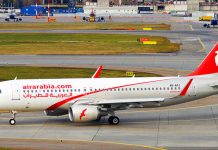A bus is a road vehicle designed to carry many passengers. Buses may be used for scheduled bus transport, scheduled coach transport, school transport, private hire, or tourism; promotional buses may be used for political campaigns and others are privately operated for a wide range of purposes, including rock and pop band tour vehicles.
Transit buses used to be mainly high-floor vehicles. However, they are now increasingly of low-floor design and optionally also ‘kneel’ air suspension and have electrically or hydraulically extended under-floor ramps to provide level access for wheelchair users and people with baby carriages. Prior to more general use of such technology, these wheelchair users could only use specialist paratransit mobility buses.
Old Tourist buses video coach build by Prakash bus body – VIDEO
Accessible vehicles also have wider entrances and interior gangways and space for wheelchairs. Interior fittings and destination displays may also be designed to be usable by the visually impaired. Coaches generally use wheelchair lifts instead of low-floor designs. In some countries, vehicles are required to have these features by disability discrimination laws.
Buses play a major part in the tourism industry. Tour buses around the world allow tourists to view local attractions or scenery. These are often open-top buses, but can also be by regular bus or coach.
In local sightseeing, City Sightseeing is the largest operator of local tour buses, operating on a franchised basis all over the world. Specialist tour buses are also often owned and operated by safari parks and other theme parks or resorts. Longer-distance tours are also carried out by bus, either on a turn up and go basis or through a tour operator, and usually allow disembarkation from the bus to allow touring of sites of interest on foot. These may be day trips or longer excursions incorporating hotel stays. Tour buses often carry a tour guide, although the driver or a recorded audio commentary may also perform this function. The tour operator may itself be a subsidiary of a company that operates buses and coaches for other uses or an independent company that charters buses or coaches. Commuter transport operators may also use their coaches to conduct tours within the target city between the morning and evening commuter transport journey.
Buses and coaches are also a common component of the wider package holiday industry, providing private airport transfers (in addition to general airport buses) and organised tours and day trips for holidaymakers on the package.
Tour buses can also be hired as chartered buses by groups as part of sightseeing at popular holiday destinations. These private tour buses may offer specific stops like all the historical sights or specifically casinos or allow the customers the comfort to make their own itineraries as per the places and activities they want to cover while on their tour. Tour buses come with professional and informed staff, insurance and maintain state governed safety standards. Not only this to make the experience for the tourists more comfortable provide facilities like entertainment units, luxurious reclining seats, large scenic windows, and even lavatories if needed.
Public long-distance coach networks are also often used as a low-cost method of travel by students or young people travelling the world. Some companies such as Topdeck Travel were set up to specifically use buses to drive the hippie trail or travel to places such as North Africa.
In many tourist or travel destinations, a bus is part of the tourist attraction, such as the North American tourist trolleys, London’s AEC Routemaster heritage routes, or the customised buses of Malta, Asia, and the Americas. Another example of tourist stops are the homes of celebrities, such as tours based near Hollywood. There are several such services between 6000 and 7000 Hollywood Boulevard in Los Angeles.



















